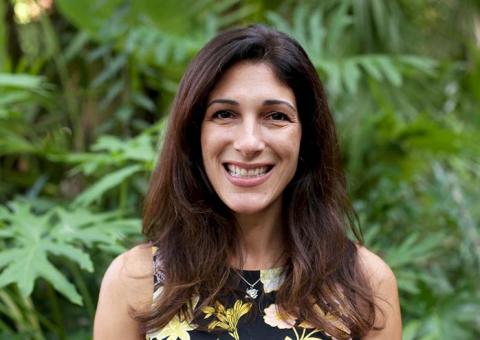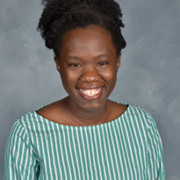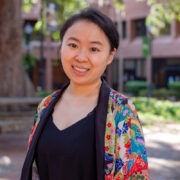Research Spotlight: Julie C. Brown
Q & A with Julie C. Brown, Ph. D., Associate Professor in the School of Teaching and Learning
What research are you currently working on?
I lead two National Science Foundation-funded grants, RIEL Biology and CRAFT, both of which include classroom-based research and the professional development of Florida’s science and math teachers. On both projects, we have some really interesting research in the works. Please visit our social media pages, @RIELBiology and @CRAFTSciMath, for more information.
In February 2022, RIEL Biology was spotlighted by the National Science Foundation as an exemplary project that advances culturally responsive STEM education. More recently (October 2022), CRAFT was spotlighted by the National Science Foundation as an exemplary project that advances students’ social emotional learning (SEL). While SEL is not taught explicitly in CRAFT, we draw upon the tenets of a race-visible, culturally responsive pedagogy that supports academic goals alongside affective domains, funds of knowledge, and asset-based, humanizing pedagogies, all of which are critical components of CRAFT.
RIEL Biology:
- We are in the final stages of validating an observation protocol for use in high school biology teachers’ classrooms (led by co-PI Mark Pacheco). The observation protocol identifies the many ways that biology teachers include students’ language and cultures in their Next Generation Sunshine State Standards-aligned instruction. Through the protocol, we’re also identifying relationships between teachers’ practice and the ways their multilingual students engage in science in these classrooms.
- We are examining the many ways that multilingual students express science-related identities when taught biology that is culturally and linguistically responsive. While home languages are traditionally observed to be a barrier to science identity development, we’re finding that teachers who use students’ languages as resources for learning biology positively impact their students’ identities as scientists (both in terms of having a science identity and the myriad ways it manifests, e.g., professing a career in a STEM-related field).
- We’ve found that culturally and linguistically responsive teachers regularly and effectively use multiple modalities (e.g., pictures, videos, gestures, models) to explain biology content for their multilingual students, as well as support their multilingual students in communicating scientific information.
CRAFT:
- We are designing a state-of-the-art two-year program to develop two cohorts of science and math teachers as culturally responsive educators. We are in the second year of our first cohort and the first year of our second cohort.
- We’re also evaluating the duration of the program that is needed to significantly improve science and math teachers’ culturally responsive instruction.
- We are learning that, through the first year of the CRAFT program, science teachers demonstrate more nuanced culturally responsive pedagogies than their math teacher colleagues. However, both groups illuminated strengths as culturally responsive educators, as well as areas for continued growth.
- Our team is using the Value System Integration tool (led by co-PI Catherine Paolucci) to allow students to share their values and their perceptions of how well these values connect with the science and mathematics they learn in school. In addition to our research, share these anonymized results with teachers to help them better understand the breadth and diversity of what matters to students and the perceived disconnect with what they learn in school. This is followed by support for teachers as they shift aspects of their instructional practices (e.g., writing learning outcomes, designing learning activities, creating assessments) to target affective development more explicitly.
What is the broader impact of your research?
To date, the RIEL Biology and CRAFT projects have directly supported the professional development of over 50 of Florida’s science and mathematics teachers, as well as their multilingual students and students who identify as Black, Indigenous, and People of Color (BIPOC). Our teachers and students hail from multiple counties across the state.
What other research topics are you interested in?
I am fully committed to supporting science and math teachers’ development as culturally and linguistically responsive educators. While my most recent projects aim to achieve this goal in secondary spaces, I’ve also worked to improve the cultural responsiveness of STEM educators in higher education (along with co-PI Pasha Antonenko) and STEM teaching assistants.















